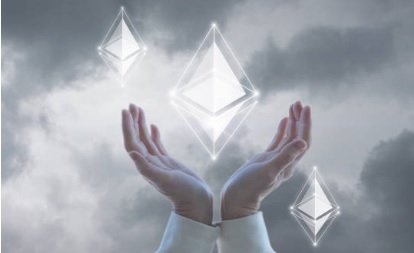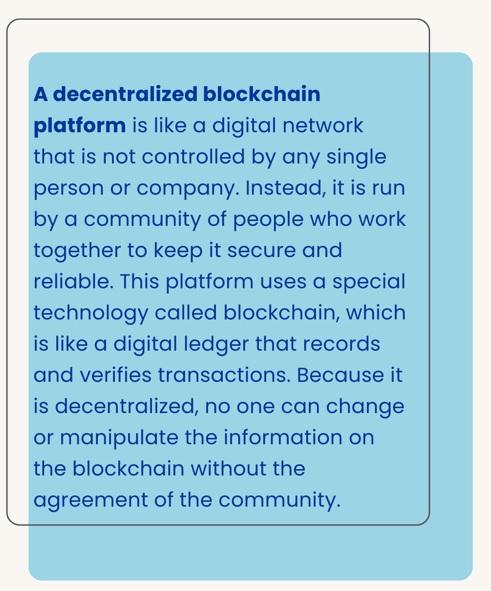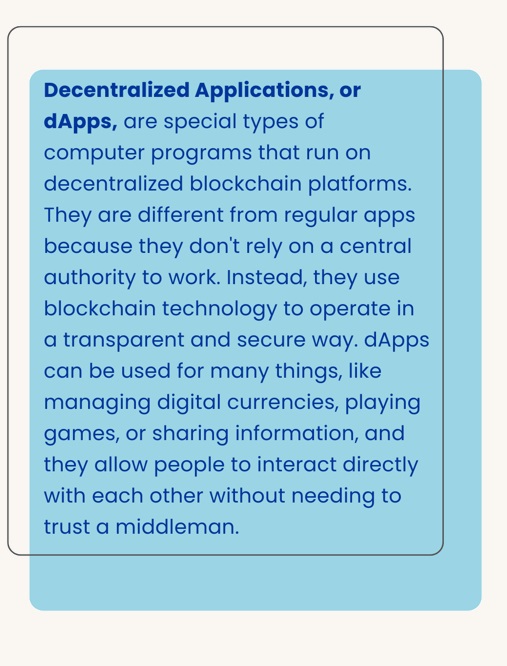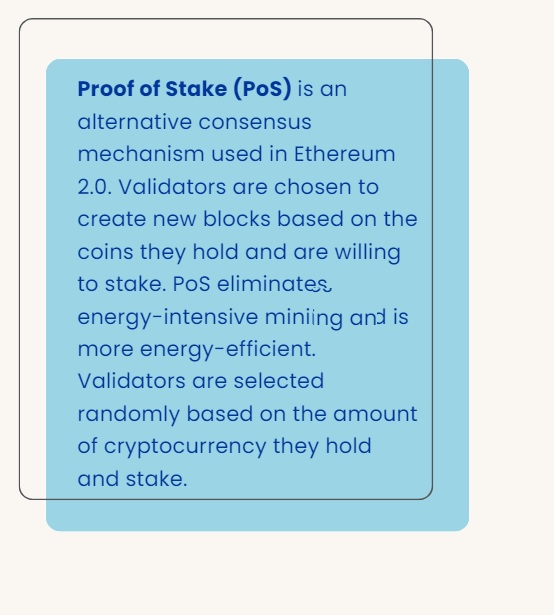
Introduction
Whether you are just starting out in the world of cryptocurrencies or have been investing for a while, this comprehensive blog aims to equip you with a clear understanding of the fundamental aspects of Ethereum. By the time you finish reading, you will have the knowledge necessary to confidently navigate and actively participate in this groundbreaking platform.
Ethereum, often referred to as the world’s second-largest cryptocurrency, has gained significant attention and recognition for its innovative features and potential applications. It goes beyond being a digital currency and serves as a decentralized blockchain platform that enables the development and execution of smart contracts and decentralized applications (dApps).
In this blog, we will delve into the core principles, its underlying technology, and its various components. Whether you are interested in decentralized finance (DeFi), non-fungible tokens (NFTs), or the potential for disrupting traditional industries, this blog will provide you with the necessary foundation to understand how Ethereum operates and the potential it holds.
So, let’s dive into the world of Ethereum together, as we unravel its complexities and uncover the transformative power of this groundbreaking blockchain platform.
What is Ethereum?
- The Basics:
- Ethereum is a decentralized blockchain platform that enables the creation and execution of smart contracts. Created by Vitalik Buterin in 2013 and launched in 2015, Ethereum aims to revolutionize various industries by providing a platform for building decentralized applications (DApps). Unlike traditional systems, It eliminates the need for intermediaries, enhances security, and promotes transparency.
- Blockchain Technology:
- Ethereum operates on blockchain technology, which is a distributed ledger that securely records and verifies transactions. In simple terms, imagine a chain of interconnected blocks, where each block contains a list of transactions. The decentralized nature of the blockchain ensures that no single entity has control over the network, making it resistant to censorship and fraud.
- Ether (ETH):
- Ether, often referred to as Ethereum’s native cryptocurrency, serves multiple purposes within the Ethereum network. It acts as a medium of exchange, incentivizes participants to secure the network, and is used to pay transaction fees and computational resources. Additionally, Ether can be bought, sold, or held as a speculative investment.
- Smart Contracts:
- One of Ethereum’s key features is its ability to execute smart contracts. Smart contracts are self-executing agreements written in code that automatically execute predefined actions when specific conditions are met. These contracts remove the need for intermediaries, reducing costs, enhancing efficiency, and promoting trust in transactions.
Definitions



How Does Ethereum Work?
- Ethereum Virtual Machine (EVM):
- Think of the Ethereum Virtual Machine (EVM) as the engine that powers Ethereum’s smart contracts. It’s a computer program that runs on thousands of computers, known as nodes, within the Ethereum network. The EVM ensures that smart contracts are executed consistently and securely, providing a level playing field for developers.
- Gas and Gas Fees:
- In the Ethereum network, Gas measures the computational power required to execute transactions and smart contracts. Gas fees, denominated in Ether, are paid to miners or validators to incentivize them to include transactions in blocks and secure the network. The complexity and computational intensity of an operation determine the amount of Gas required and, consequently, the associated Gas fees.
- Mining and Consensus:
- Miners competed to solve complex mathematical problems, and the first miner to solve it successfully added a new block to the blockchain. However, Ethereum is transitioning to Ethereum 2.0, which introduces Proof of Stake (PoS) consensus. PoS eliminates the need for energy-intensive mining and relies on validators who hold and “stake” their Ether to secure the network and validate transactions.
Ecosystem and Applications:
- Decentralized Finance (DeFi):
- Decentralized Finance, also known as DeFi, plays a crucial role in the world of blockchain technology. DeFi aims to recreate traditional financial services, such as lending, borrowing, and trading, but without the need for intermediaries like banks.
- By using special computer programs called smart contracts, DeFi protocols automate these financial activities, making them accessible to anyone with an internet connection. This is beneficial because it allows more people to participate in financial activities without relying on traditional financial institutions. With DeFi, individuals can lend their digital assets to earn interest, borrow funds without going through a bank, and trade assets directly with others.
- Non-Fungible Tokens (NFTs):
- Non-Fungible Tokens (NFTs) have gained significant popularity within the blockchain ecosystem. NFTs represent unique digital items, such as artwork, collectibles, or virtual real estate. Each NFT is distinct and cannot be exchanged on a one-to-one basis like cryptocurrencies.
- NFTs leverage blockchain technology to provide proof of ownership and the origin of these digital assets. This creates new possibilities for creators, collectors, and investors. By utilizing the features of blockchain, NFTs ensure that the ownership of these digital items can be easily verified and tracked.
- This opens up exciting opportunities for artists to showcase and sell their digital creations. It also allows collectors to own unique digital items and gives investors a chance to explore the potential value of rare or popular NFTs. The world of NFTs is an innovative space that revolutionizes digital ownership and unleashes creativity.
Getting Started:
- Wallets and Security:
- When you start using Ethereum, it’s important to have a wallet—a digital tool that keeps your Ether (the cryptocurrency of Ethereum) safe and allows you to send and receive it. Wallets can be software programs, hardware devices, or even online services.
- It’s crucial to choose a reliable wallet and follow security best practices to protect your funds. Look for wallets that have a good reputation, offer strong encryption to safeguard your private keys, and provide features like two-factor authentication to add an extra layer of security.
- Buying and Selling Ethereum:
- To get Ether, you’ll need to use a cryptocurrency exchange that supports Ethereum. These exchanges are platforms where you can buy and sell cryptocurrencies, including Ether. They often accept traditional currencies, like the US dollar or euro, or other cryptocurrencies as payment.
- It’s important to do your research and choose a reputable exchange that complies with regulations and prioritizes user security. Look for exchanges with a good track record, transparent fee structures, and a user-friendly interface. Some popular exchanges that support Ethereum include Coinbase, Binance, and Kraken.
- Storing and Managing Ethereum:
- Once you have acquired Ether, you need to store and manage it properly. One popular option for secure storage is a hardware wallet, such as Ledger or Trezor. These are small physical devices that store your Ether offline, away from potential online threats. They provide an extra layer of protection against hacking attempts.
- Another option is using software wallets, which are applications installed on your computer or mobile device. These wallets offer convenience but may have a higher risk of being compromised if your device is infected with malware. Additionally, there are portfolio tracking tools and applications available that help you keep track of your Ethereum holdings, monitor their value, and stay informed about market trends.
Future Potential
- Scalability and Upgrades:
- Ethereum recognizes the need to handle a larger number of transactions to support its growing user base. To address scalability issues, Ethereum is actively working on a series of upgrades. One of the most significant upgrades is Ethereum 2.0. This upgrade aims to introduce several improvements that will enhance the network’s capacity to handle more transactions per second. One key feature of Ethereum 2.0 is the transition from the current consensus mechanism, Proof of Work (PoW), to Proof of Stake (PoS).
- This shift will make the network more energy-efficient and increase its scalability. Additionally, Ethereum 2.0 will implement sharding, which means breaking the blockchain into smaller parts called shards. This will allow multiple transactions to be processed in parallel, further improving scalability. Furthermore, layer 2 solutions, such as rollups, will be integrated to optimize transaction throughput and reduce costs. These upgrades collectively aim to improve Ethereum’s scalability, reduce transaction fees, and enhance overall network efficiency.
- Interoperability and Other Projects:
- Ethereum’s versatility extends beyond its own ecosystem. It actively collaborates with other blockchain platforms to enable interoperability, allowing different networks to communicate and share information seamlessly. Projects like Polkadot and Cosmos focus on building bridges that connect Ethereum with other blockchains. These bridges facilitate cross-chain communication, enabling assets and data to flow between different networks.
- By fostering interoperability, Ethereum expands its potential and opens up opportunities for decentralized applications (dApps) to leverage the strengths of multiple blockchains. This collaboration between Ethereum and other projects strengthens the overall blockchain ecosystem and encourages innovation by providing developers with a broader range of tools and resources.
As Ethereum continues to evolve, it aims to address scalability concerns and enhance interoperability. These efforts reflect Ethereum’s commitment to improving its technology and providing a robust platform for developers and users alike. Stay informed about Ethereum’s ongoing upgrades and collaborations, as they play a crucial role in shaping the future of blockchain technology.


Conclusion
As the cryptocurrency space evolves, the blockchain platform known as Ethereum continues to make progress and introduce new developments. To stay ahead of the curve and take full advantage of the opportunities, it’s crucial to stay updated with the latest news and advancements within its ecosystem.
Whether your interests lie in decentralized finance (DeFi), non-fungible tokens (NFTs), or other aspects of this platform, you now possess the knowledge necessary to explore and actively participate in these exciting areas.
While navigating the world of Ethereum, it’s beneficial to continuously expand your knowledge by seeking out resources that can help you understand the intricacies of this decentralized blockchain platform. Engaging with the community, joining relevant forums or social media groups, and participating in discussions can further deepen your understanding and keep you connected with other enthusiasts.
Whether you are an investor, developer, artist, or simply an enthusiast, Ethereum provides a robust platform for innovation and growth. It serves as a foundation for various transformative endeavors, enabling individuals to contribute to and benefit from the ever-evolving world of decentralized technologies.
Additional Resources
- Wealth Solutions Hub:
- Ethereum Official Website: The official website of Ethereum provides comprehensive information about the platform, its technology, updates, and resources.
- Ethereum Whitepaper: The original whitepaper by Vitalik Buterin, the founder of Ethereum, outlines the design and principles behind the platform.
- Ethereum Reddit Community: Join the Ethereum subreddit to stay updated with the latest news, discussions, and insights shared by the Ethereum community.





